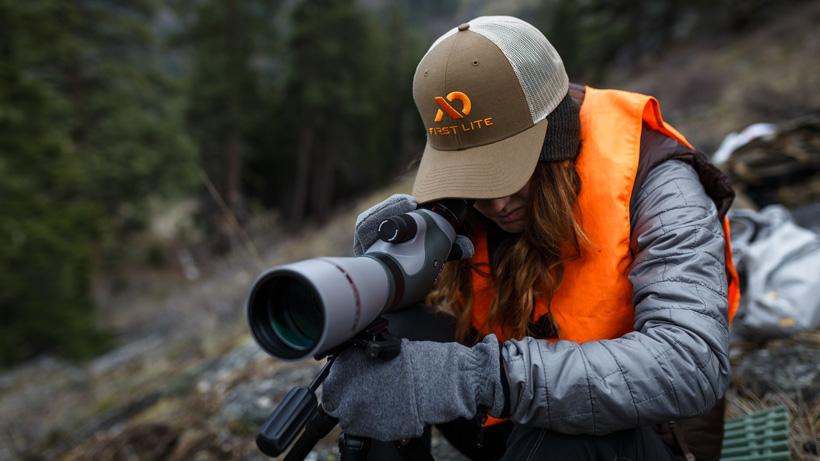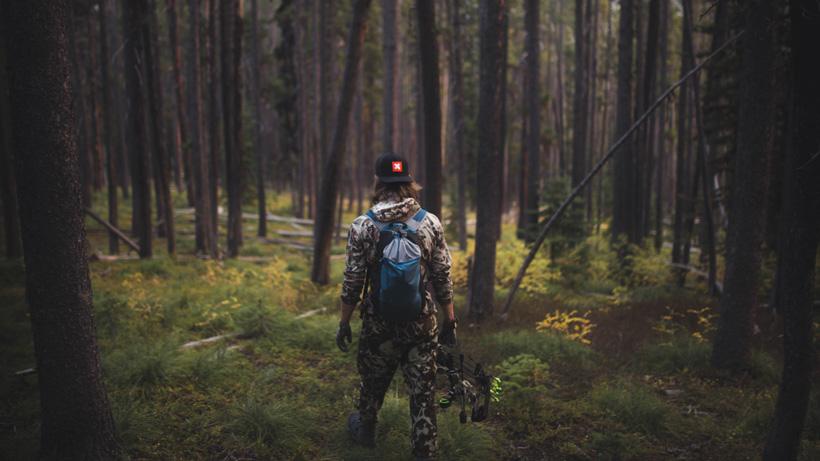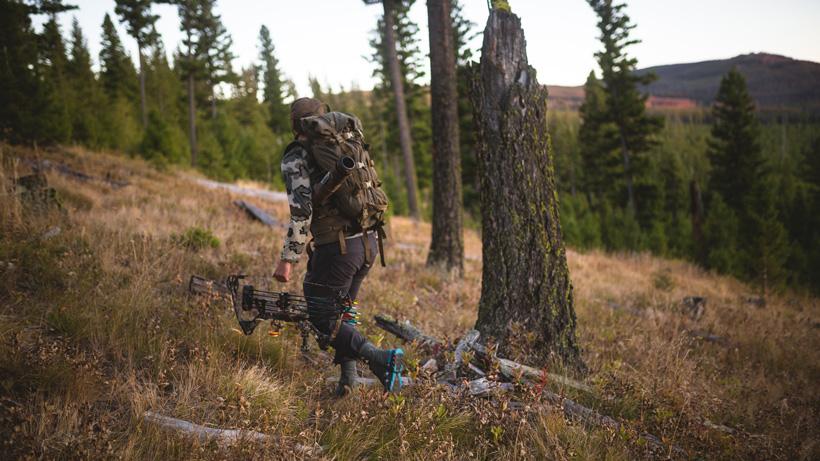There are few things more exciting than the anticipation of your first hunt out West. I still remember when I had my first elk tag in Montana. I didn’t really know anything about elk and my bowhunting ability was subpar, but that didn’t matter. I was beyond eager to hit the hills and pursue a quarry I knew nothing about.
Looking back, I admire my willingness to “just go for it,” rather than let fear of the unknown handicap me from some of those experiences chasing elk through the mountains. But, at the same time, I look back and cringe. While I was appropriately enthusiastic, I was wildly unprepared. That first elk hunt, I was so excited to get out and hunt that I forgot my elk tag. Other times, when I would find elk and have close encounters, I wouldn’t have known how to properly handle hundreds of pounds of meat if I actually did arrow one.
I suppose this type of behavior and unpreparedness is expected of a young guy in his early 20s. But I could have gotten seriously hurt if something went wrong, and I wouldn’t have had the proper gear or know-how to keep myself safe and get out of a situation. The more prepared you are for your first western hunt, the more fun you are going to have and you’ll also be more likely to have success.
Gear
First, let’s touch on the importance of gear and what you’ll want to consider bringing that may differ somewhat from treestand hunting. I didn’t know anything about gear or the importance of it when I first started hunting. I used a $75 backpack, wore a pair of olive-colored denim jeans, and didn’t even own any sort of puffy or insulation layer.
You don’t necessarily have to have all of the absolute best gear—that can cost thousands and thousands of dollars—but the better gear you do have is going to make your experience more enjoyable, more comfortable, allow you to stay out longer, and, likely, be more successful. A few especially important pieces of gear to invest in are boots, your pack, good glass, and a quality layering system.
Boots are an area that you really shouldn’t skimp on. If you end up with blisters or other foot problems, you’re going to have a difficult time hunting hard and being successful. Also, if you are successful you’re going to need the support from high-quality footwear to pack out an animal on your back. There are a few different options for quality footwear. It’s hard to go wrong with a traditional leather hunting boot. If you want a lighter weight option that is maybe not as durable, mountaineering companies make a lot of synthetic boot styles. The third option, especially during early warmer hunts, is to use a pair of waterproof trail runners with gaiters. While this is the lightest option, you may regret your decision when packing meat out back to the truck. Whatever type of footwear you do choose, make sure they fit your feet properly and are broken in before your hunt.
Another area you won’t want to skimp on is getting a lightweight pack that is capable of carrying heavy loads. You could definitely use a backpacking type pack, which would probably work great until you have to pack an animal out on your back. Good packs aren’t cheap, but if you are going to be doing multiple backpack style hunts, it is well worth the investment. There are several companies that make great hunting packs: Kifaru, Stone Glacier, Mystery Ranch or Exo Mountain Gear.
For most hunts out West, you are going to need high-quality optics. Most game animals are best hunted through spot-and-stalk hunting. Unless you are strictly hunting bugling bulls in thick timber or hunting out of a treestand or ground blind, you’re going to rely heavily on your optics to find your quarry. The better glass you can afford, the more likely you are to find game—especially in low-light situations. A good all-around option would be to bring a pair of 10x42 binoculars for most of your glassing and a spotting scope to take a closer look at animals you’ve spotted and for glassing far off places that you can’t quite reach with your binoculars.

Another item that is invaluable when glassing is a tripod. You can get an adapter to put your binoculars on the tripod and you will obviously need one for a spotting scope. Putting the glass on a tripod makes glassing more comfortable and allows you to look for longer periods of time while keeping your binoculars steady, eventually, leading to finding more game.

Photo credit: Dan Wilde
Photo credit: Dan Wilde
Make sure you have a good layering system of clothing before your hunt. This is not only going to keep you comfortable but is also a safety issue. Weather can change quickly in the mountains and if you’re not prepared with a quality system, you may find yourself in a dangerous situation. A good layering system consists of a good base layer (merino wool or synthetic), a mid-layer, an insulation layer, and a hard shell (rain gear) and/or a softshell. Don’t be afraid to mix and match in this area and use mountaineering brands if that can save you some money or allow you to use what you already have.
You also may want to think about getting a GPS unit. You can get a standalone GPS or download the OnXHunt app onto your phone. Garmin also makes an inReach device, which is a GPS that also allows two-way messaging and allows friends and family back home to track where you are.
Lastly, if you are going to be doing a lot of incline and decline hiking in the mountains, think about picking up a pair of trekking poles. These will save energy in your legs, which will allow you to go further and faster and help keep weight off of your joints. You will really appreciate these when you’re packing out meat, especially if on a steep slope.
To keep yourself from bringing not enough—or too much gear—you should consider creating a gear list for every item that you need for your hunt. Not only will this prevent you from forgetting anything, it will help you bring the appropriate amount of gear. You can find other people’s gear lists to go off of in previous goHUNT articles here.
Food
Similar to gear, it’s important to have a list or menu to plan out your food, especially if you are on a backpack backcountry hunt and carrying all your food on your back. You want to make sure to have enough, but not too much.
On a spring bear hunt, my first year living in Montana, we were miserable because we didn’t plan food well and didn’t bring nearly enough. We made the mistake of throwing some potatoes, a few Snickers, and some Mountain House meals in my pack and hoping it was enough.
When you are hiking all day in the mountains, you are going to burn a significant amount of calories. You need to be prepared and calculated to make sure you are getting enough fuel to hunt hard for the entirety of your trip. Make a plan for each day and make sure that it contains enough calories.
I like to ration out my food for each day in a gallon Ziploc bag, not including my freeze-dried dinner. This prevents me from overeating and not having enough later in my hunt and also helps me make sure I am eating enough. Again, you can read about specific food lists from other hunters or backpackers to get some ideas for what to bring. You want to have food that has a high-calorie amount per ounce of weight. I like to bring an assortment of oatmeal, bagels, various bars, trail mix, jerky and a freeze-dried meal per day. There are tons of variations, you just have to make sure it’s something that you are going to enjoy eating for multiple days.
Knowledge

Photo credit: Dan Wilde
Photo credit: Dan Wilde
Learning how to be successful on any hunt is a lifelong pursuit of learning and experience. Don’t let lack of knowledge prevent you from going on a hunt and learning as you go. You should do as much as you can to learn and be prepared, which will increase your chance of being successful in filling your tag.
One of the biggest learning curves for me was learning where to go. Growing up in the Midwest, we were always limited to a specific area that we had permission for or had leased. When I moved out West, I was overwhelmed at how much public land there was to explore, which was great, but I didn’t know where to start. I think a common mistake is just picking a general area on a map and going to it, expecting there to be game everywhere. That is certainly what I did.
What I’ve learned is to utilize online resources (forums, goHUNT's INSIDER, state agencies) to decide on a general area or unit. From there, I use Google Earth and OnXMaps, then call biologists to find specific spots in that unit to try. Rather than picking a general area and wandering aimlessly through the unit, I will mark specific spots on my GPS that I think would make good places to glass from, where to park, where to set up camp, water sources, potential bedding areas, etc. The more specific you can be, the better. Mark multiple spots that you think will be good areas and if one doesn’t turn out to be any good, you can move on to the next spot. Randy Newberg has a great system on this for elk, that I would recommend reading. Wherever you go, make a plan beforehand, knowing this plan might have to adapt depending on roads, gates and other hunters.
Just like in whitetail hunting, wind and scent are key. It’s the same thing for hunting the mountains, the only main difference is understanding thermals. Thermals are the changing wind patterns that take place in the mountains. It’s hard to call them “patterns” because, in the mountains, the wind is often swirling or unpredictable. Generally, the wind comes downhill in the morning. By mid-morning, once the sun has risen and warmed up the area, the wind shifts and starts blowing back uphill. This continues until evening when it starts to cool down and the wind then switches again to blowing downhill.
It’s extremely important to have a bottle of powder, or indicator, to constantly be able to check the wind. You can’t always rely on it blowing straight up or straight downhill.
Beyond having a plan of how to hunt an area and how to stalk an animal downwind, you’re going to need to have the know-how of breaking down a big game animal and getting it back to your truck. If you’ve primarily hunted in the Midwest or on the East Coast, this may be new to you. You likely aren’t going to be able to drag an elk out of the mountains or get an ATV back there to do the hauling for you.
You need to know how to properly care for an animal and get all of the meat out and into a cooler, before it starts to spoil. Thankfully, doing this is a lot easier than one might think. All you need to do is skin the animal and get the meat off the body and into game bags. It really is hard to mess up. Take the time to do some research beforehand and watch some tutorials about severing joints and breaking the animal down into quarters so you can pack it out. Get the meat off of the body as soon as possible, put it in a game bag and hang it in the shade to cool down. You can watch a great tutorial on the gutless method here.
Depending on how many people you’re hunting with and if you have horses or other pack animals, be prepared to make multiple trips with heavy loads. My first bull elk I packed out was four miles from the trailhead on pretty mild terrain and it took my hunting partner and me 12 hours from when I shot it to when we got it back to the trailhead.
Get in Shape

Photo credit: Taylor Wilde
Photo credit: Taylor Wilde
The only way to try and be prepared for this is by being in the best shape possible before you start your hunt. Most likely, your body isn’t used to carrying heavy loads in a backpack. Also, if you don’t live out West, your lungs aren’t going to be acclimated to hiking at elevation. In order to have an enjoyable trip, you need to do everything you can to be prepared physically.
One of the best things you can do is hike hills or stairs with a weighted pack. Don’t go overboard and cause injury by filling your pack too heavy. Use 35 pounds or so to start and do that regularly.
In the gym, get your lungs and legs into shape. The Stairmaster is a great training tool. Do a lot of weighted step-ups, lunges, and squats. Anything that can prepare you for climbing up and down steep terrain with weight in your pack is a good exercise.
Realistic Expectations
Lastly, have realistic expectations for your hunt. It’s easy to get caught up in what you see on TV or on social media and think your hunt is going to be easy. If you are hunting public land—especially general over-the-counter tags—you’re going to really have to work for it and earn it in order to be successful in harvesting an animal. If you’re coming from out-of-state, you’re going to be competing against resident hunters who know the area.
You need to be willing to work hard day after day even if you aren’t seeing anything or having any encounters. Work the plan that you have made and adapt as you learn about your area when you finally have “boots on the ground.” You are probably going to have to hike a lot every day and spend a lot of time behind your glass.
If you can embrace the difficulties of the hunt, be persistent and be prepared, whether you fill a tag or not you’re going to have a successful hunt. If you have a western hunt coming up this year, don’t put it off, start preparing now.





0 Comments